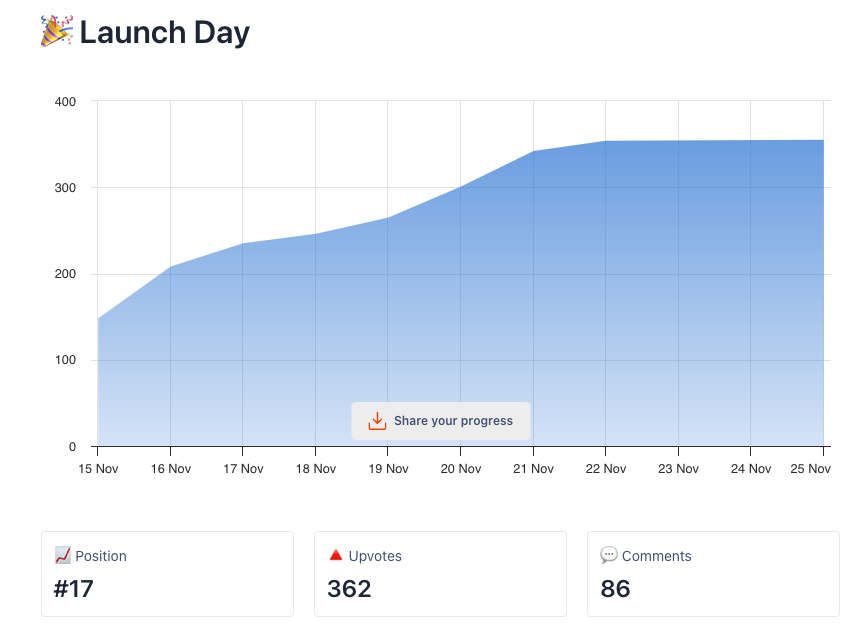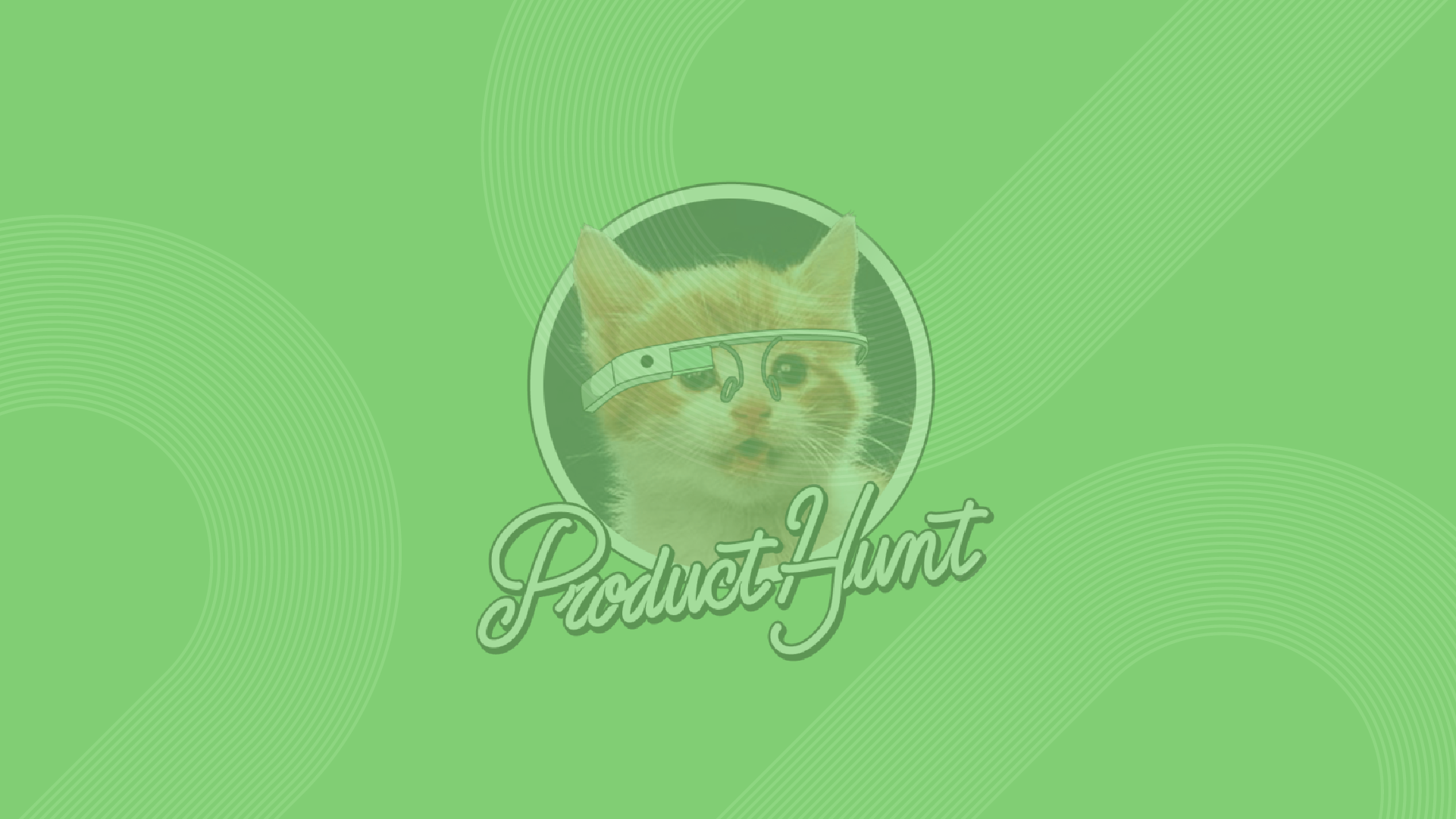Launching On Product Hunt: Top Tips and Lessons Learned
A Product Hunt launch is exciting for any tech company. At Hurree, our recent experience launching on Product Hunt was a rollercoaster ride, to say the least. With it being our first launch, it was challenging to set specific goals, but overall we were largely successful and we reached many of our targets. That being said, there were still some missteps we made along the way and some key takeaways that we will definitely implement if we launch again on Product Hunt.
Today we will break down our top tips from pre-launch, launch-day, post-launch and what we discovered along the way.
Before launching on Product Hunt:
- Community-first approach: Product Hunt is a community-driven platform where engagement and interaction are key. From our research ahead of our launch, we learned that understanding and participating in this community can make a significant difference. It's not just about promoting your product constantly; it's about becoming a part of a vibrant ecosystem of tech enthusiasts and innovators. Share your views in discussions, give meaningful feedback and provide value in your comments rather than just promoting your product at every launch.
- Crafting a compelling narrative: Your product story should resonate with your target audience on Product Hunt. We focused on why we built Hurree, the problems it solves, and how it can make life easier or better for our potential users.
- Be prepared: Ensure your website is up to date, you have tested any forms or email workflows that will be used on launch day, and that your website is equipped to deal with a large volume of traffic. Make sure your social channels are all updated and that they provide informative and useful content about your product, so that any new visitors get an instant idea of the product or service you are offering. We also made sure any help articles within our Hurree Academy help centre were current. Our social media posts were scheduled in advance so it was one less thing we had to worry about on the day of our launch.
- Pre-launch teasers and build-up: Don't underestimate the power of anticipation. We used social media, our company blog, and email newsletters to create a buzz around our upcoming launch. Sharing behind-the-scenes glimpses, teaser videos, and sneak peeks of our product added to the excitement and prepared our audience for what was to come. We added banners to our website to let visitors know we were launching on Product Hunt and included these in email footers too.
- Education on Product Hunt: Don’t forget that some people will have no idea what Product Hunt is, so some education around it is vital, so make users aware that they need to have an account on Product Hunt first before they can support your launch. Before your launch, you can create a ‘coming soon’ page, where you can start to gather support. Users can click the ‘Notify me’ button to stay informed of when you launch. We reached out to our existing customers and partners ahead of our launch, explaining what Product Hunt actually is and actively encouraging account creation.
- Set goals: Although this might be a tricky one, especially if you’ve never launched on Product Hunt before, set yourself some KPIs and targets for your launch. Whether it’s the number of upvotes, comments, reviews or visits to your website, it’s important to set SMART KPIs to keep you motivated and focused. For our launch, our main targets focused on overall product ranking, number of reviews, number of comments and conversion rate.
During our launch on Product Hunt:
- Timing and visibility: Choosing the right day and time can significantly impact your launch’s success but can be a tricky one to decide. You don’t have access to see who else is launching on the same day as you are, so you risk launching on the same day as a competitor. Our research indicated that launching earlier in the week, on Tuesdays or Wednesdays, captures the week's peak engagement. We launched on a Wednesday and targeted an early morning PST launch to maximize global visibility, launching at 00:01 PST time. It’s important to consider time zones during your launch to target your potential audience at the right time. As we launched at 00:01 PST, we made sure our team were online and ready to go live at 08:00 GMT, and made sure our emails were sent to each timezone at an appropriate time during the 24-hour launch period.
- Engaging content and visuals: On launch day, your product page should be ready to impress and draw in your potential customers. High-quality images, engaging videos, and concise, compelling copy are crucial. We ensured that our visuals were not only attractive but also informative, explaining Hurree’s features and benefits at a glance.
- Proactive community engagement: Our team was geared up to engage with the community from the moment we went live. Responding promptly and thoughtfully to comments and questions not only helped to boost our visibility but also showed that we value user input. This interaction can turn casual browsers into supporters and even evangelists for your product.
- 24-hour support: To provide round-the-clock assistance during our launch, our team operated in shifts, ensuring continuous support over 24 hours. We observed a slight dip in engagement as our typical working day in GMT neared its end. There was a noticeable uptick in activity around 17:00 GMT, aligning with the start of the workday in other time zones. This pattern highlighted the global reach and time zone variations of users on Product Hunt. We made sure our entire team had access to our online customer support service to ensure any users on our platform had access to 24/7 support.
The lessons we learned from our launch on Product Hunt
- UTMs are your best friend: A UTM (Urchin Tracking Module) code is a snippet of text added at the end of a URL to track metrics and performance of specific links, essentially allowing marketers to track where web traffic has come from. As part of our launch, we offered two paths to accessing Hurree, a link to our landing page and a link directly to sign up to a free trial. We included a UTM in our landing page but didn’t include one on the link to sign up to Hurree. This meant we had to waste time researching direct sign-ups to verify whether they were actually from Product Hunt.
- Comments are key: We noticed that more upvotes don’t necessarily equal a higher ranking. For example, the number 1 product of the day won’t always have the highest number of upvotes. Comments and reviews also go towards overall ranking. We found the most value came from the comments on our launch page. We found it had the biggest impact on our overall ranking throughout the day. If we had known from the start of our launch, we would have encouraged more comments at the beginning of the day rather than halfway through.
- Ignore your launch dashboard until your launch is over: We were guilty of constantly watching our launch dashboard and it didn’t provide much value. Don’t waste time worrying about the specific numbers, just focus on engaging with your community and spreading the word about your great product.

- Expect peaks and troughs: Don’t panic if there are moments where you feel like things are moving a million miles a minute and then other times when it feels like time is standing still. We found that activity and engagement came in waves and in those moments of calm, take some time to go out to other platforms like LinkedIn for a boost of motivation.
- There will be bots and inauthentic hunters: When first launching, we didn’t think too much about bots etc but once we launched, it was definitely front of mind. As soon as Hurree went live, we started receiving messages to our site offering upvotes for money which goes against the whole point of this platform. Our launch page also had traffic from users giving the same feedback on every other product that launched that day. Although this isn’t harming anyone, it’s frustrating when trying to concentrate on the real, valuable feedback. This comes with any online platform, however, so our advice is to just try to ignore it and focus on the feedback that really matters.
The post-launch phase: analysis and engagement
- Deep dive into feedback: The work doesn’t stop once your launch finishes. Use the insights gained from the launch to improve your product and inform your marketing strategy. We meticulously went through every piece of feedback, categorising it into praise, product suggestions, and criticisms or improvements. This helped us understand our users’ needs and preferences, providing a roadmap for future updates and improvements.
- Continued engagement and building relationships: Staying active on Product Hunt and other social platforms post-launch is vital. We continued to engage with our audience. interacted with users, thanking them for their support and addressing their concerns. This ongoing engagement helped in building a loyal user base and maintaining the momentum generated by the initial launch.
- Nurture your new audience: With any luck you will have had an influx of new customers or potential customers at least. Make sure you follow up with leads and nurture them in a way that will result in a conversion. Whether it’s your email workflows or direct outreach from your sales team, ensure you provide value at each stage to effectively move leads through your funnel.
Our Product Hunt launch was a learning curve filled with challenges and triumphs. It taught us the importance of community engagement, storytelling, and strategic planning. By sharing these insights, we hope to empower other companies to leverage Product Hunt effectively and make their launches successful. Remember, your Product Hunt launch is more than just a one-day event; it's the start of an ongoing journey. Embrace the opportunity to showcase your product, gather valuable feedback, and build lasting relationships with your users.
Share this
You May Also Like
These Related Stories

Hurree is launching on Product Hunt

[Video Interview] Let's Talk About Product Design



